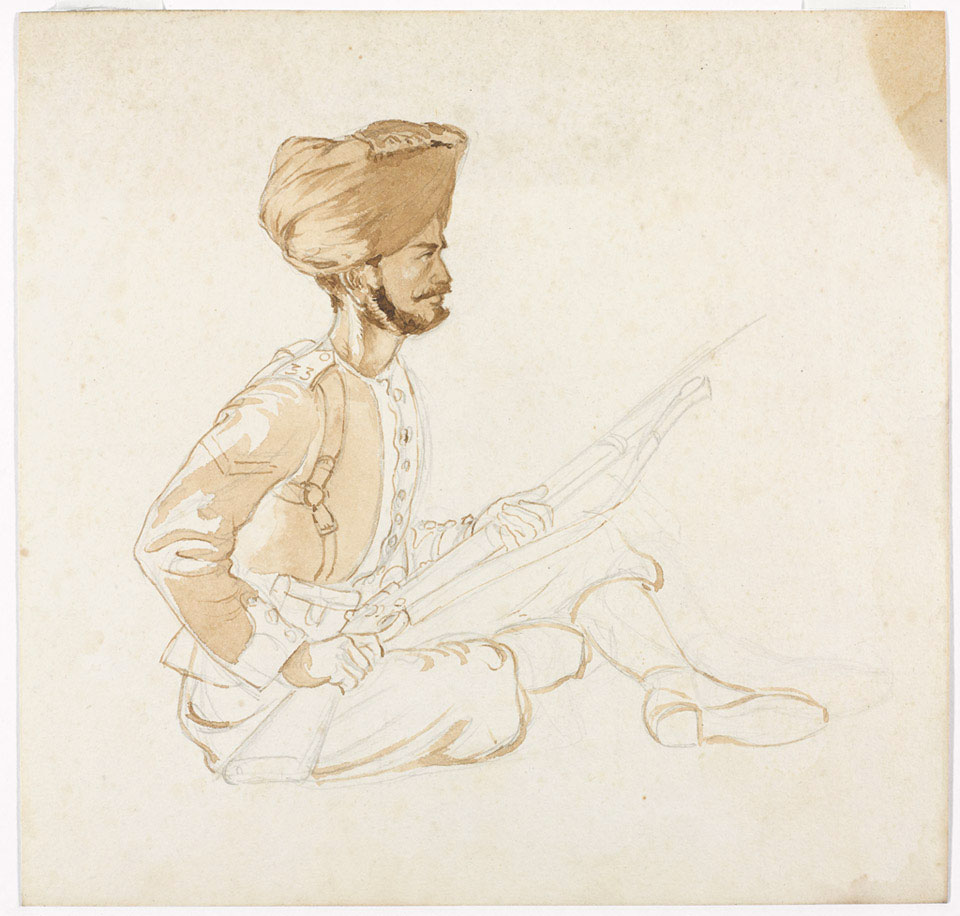
Online Collection
« Prev - 1 of 1 results - Next »
Lance-Naik, 33rd Punjabis, 1888 (c)
Bistre and pencil drawing, unsigned, by John Lockwood Kipling (1837-1911), 1888 (c).
A lance-naik, equivalent to a lance corporal, of the 33rd Punjabis, seated with a Snider-Enfield rifle, 1888 (c).
John Lockwood Kipling was the father of author Rudyard Kipling (1865-1936). Kipling, working as a professor in an art school in Bombay, was commissioned by the government to tour the Punjab and Kashmir in the 1870s. He produced studies of the people and culture of the North West Frontier of India. Kipling went on to teach at the Mayo School of Arts in Lahore and also worked as curator of the Lahore Museum. He also illustrated the works of his son, Rudyard.
The 33rd Punjab Infantry was originally raised in Allahabad during the Indian Mutiny in 1857. After hostilities ended, the Allahabad Levy became the 37th Native Infantry but were renumbered the 33rd in 1861. In 1891, 'Allahabad' was dropped from its title and, in 1891, the unit became the 33rd (Punjab) Regiment Bengal Infantry. The 33rd Punjabis served in East Africa, the Middle East and on the Western Front During World War One (1914-1918). In the major reorganisation of the Indian Army in 1921-1922, the 33rd Punjabis became the 3rd Battalion of 16th Punjab Regiment. The 3rd Battalion saw service in the Far East during World War Two (1939-1945). In 1947, the 16th Punjabi Regiment became part of the Pakistan Army.
NAM Accession Number
NAM. 1983-07-8-1
Copyright/Ownership
National Army Museum, Out of Copyright
Location
National Army Museum, Study collection
Object URL
https://collection.nam.ac.uk/detail.php?acc=1983-07-8-1

